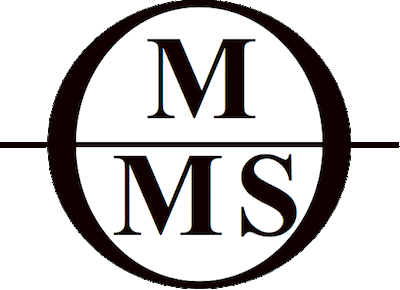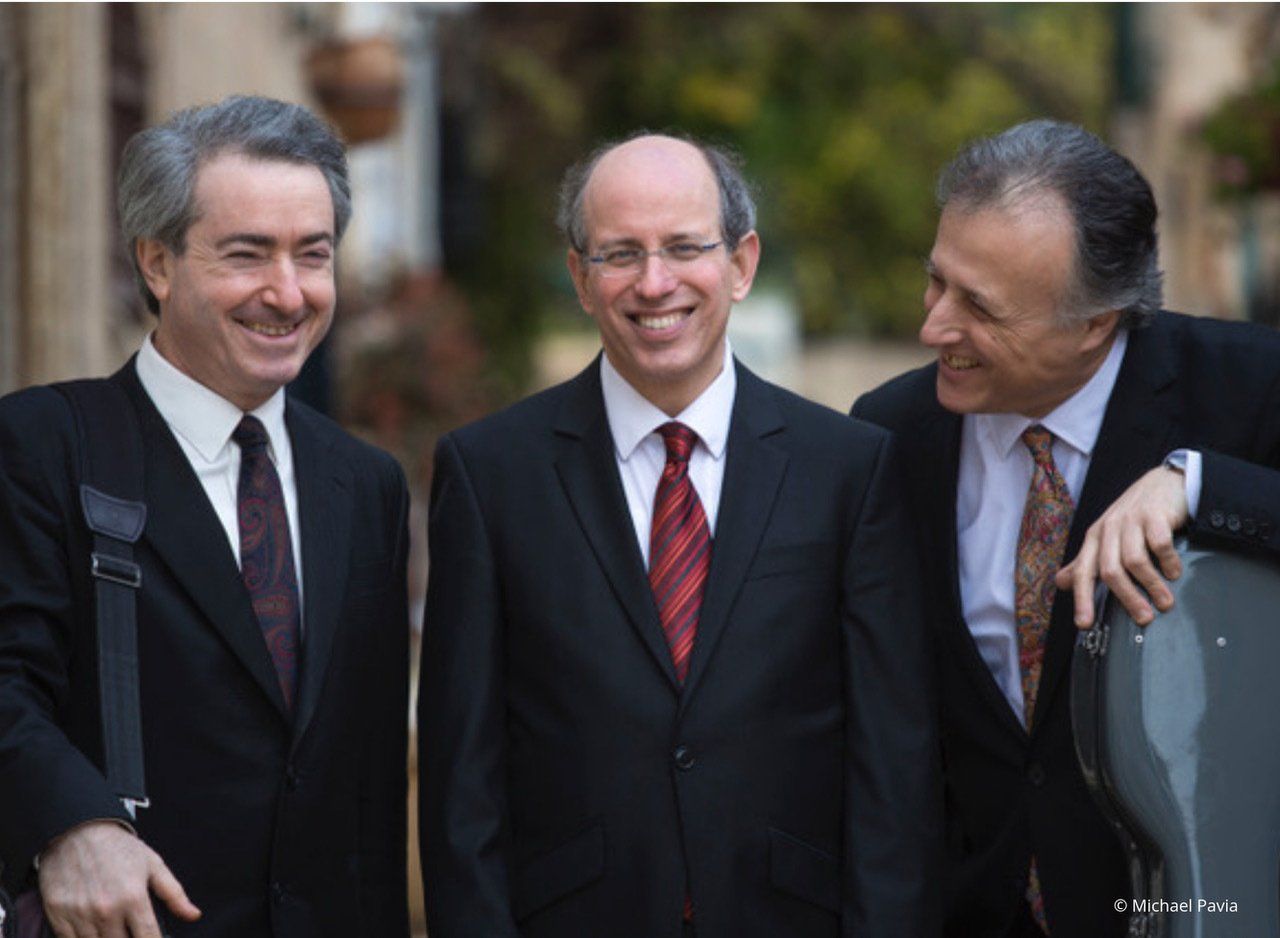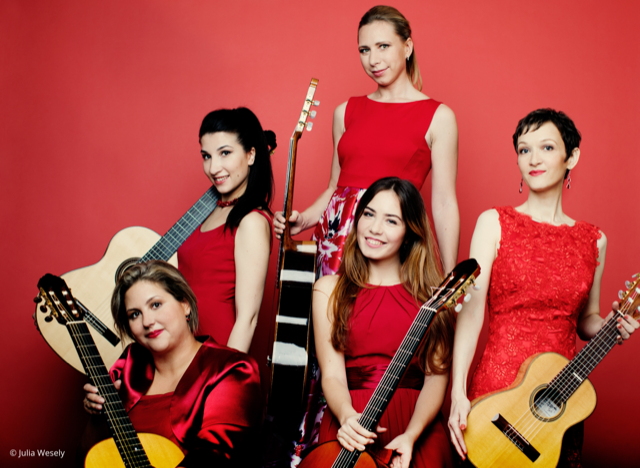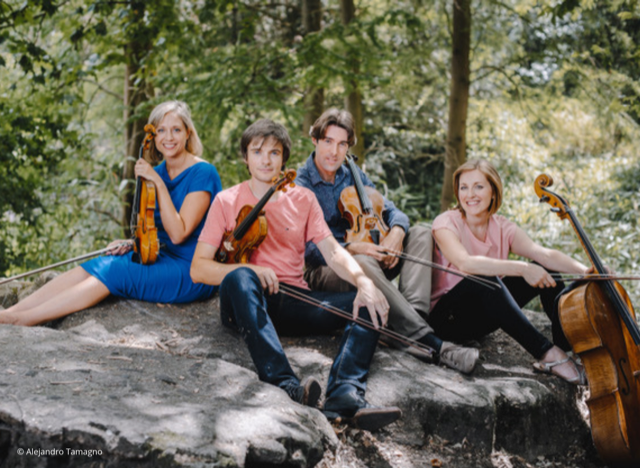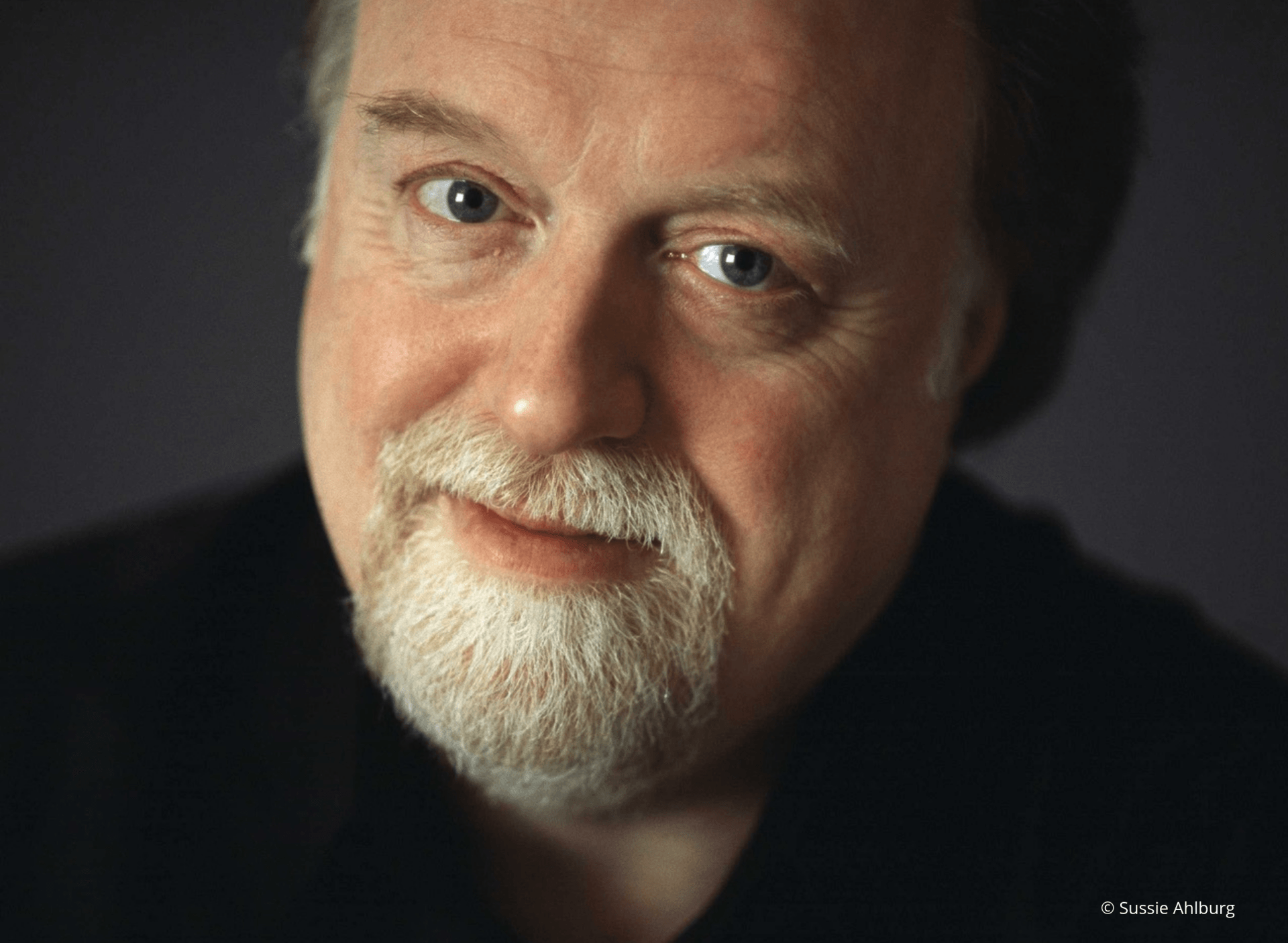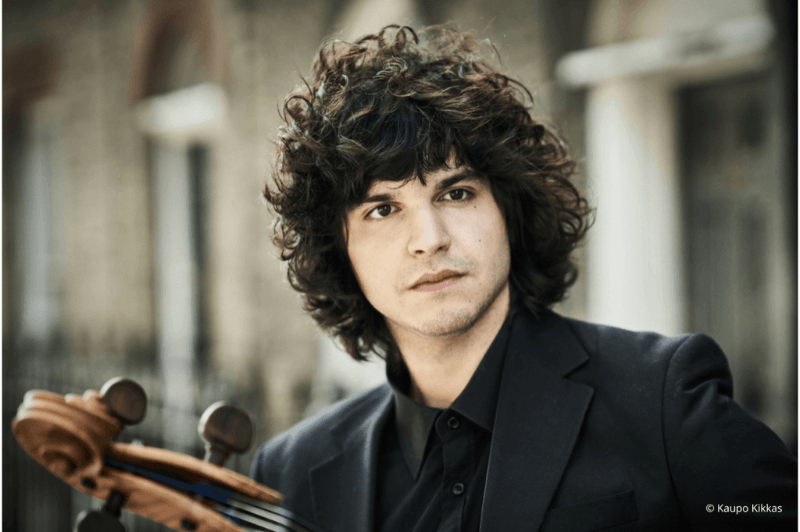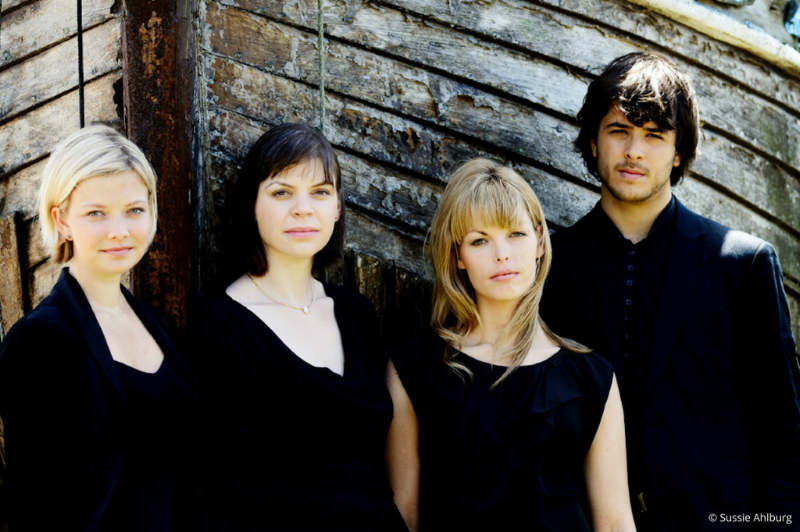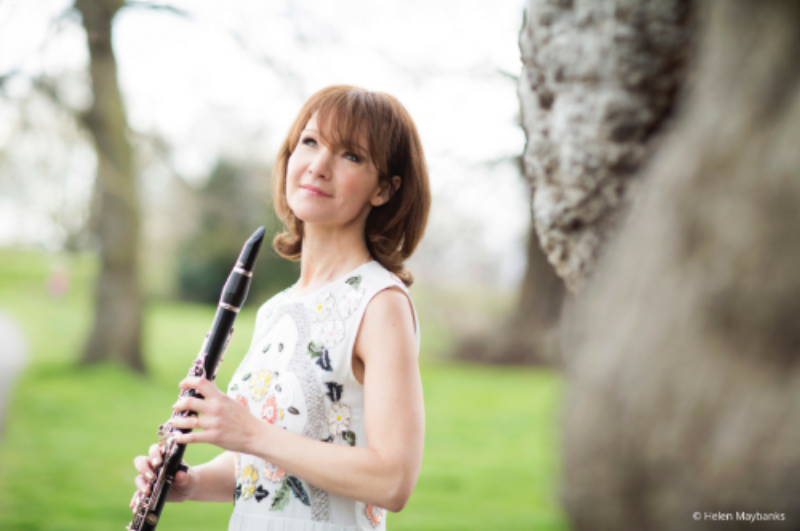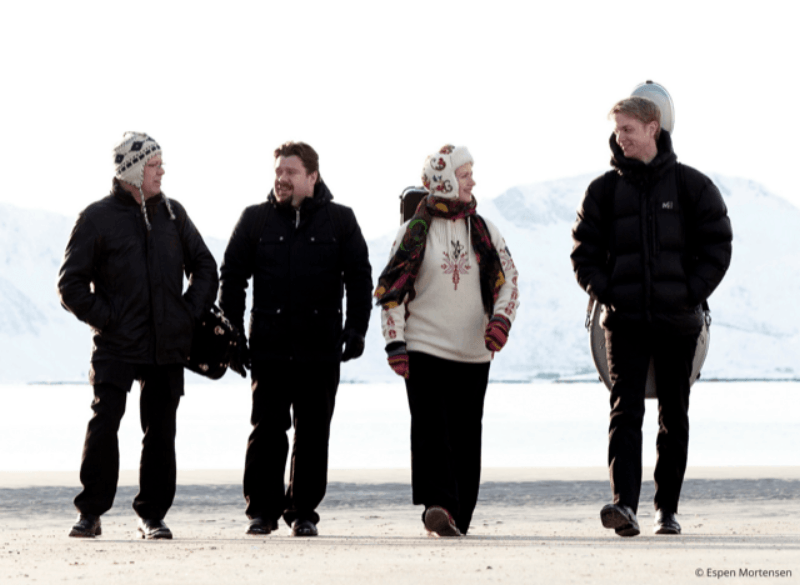Enjoy music from the international Metamorphoses trio on 13th February
Thursday 13th February 2020 at 7.30pm
Metamorphoses is made up of British-American clarinettist, Jean Johnson who lives in Edinburgh, Dutch-born violist, Roeland Jagers living in the Netherlands, and pianist Elena Fisher-Dieskau. These players have quickly made a big impact on the international stage since the formation of the group in 2015. Their debut CD ‘Metamorphoses’ was reviewed rapturously by Gramophone.
' Metamorphoses are fantastic, incredibly clever, tight and very polished. Beautiful phrasing…' BBC Radio 3 Record Review
Find out more about Metamorphoses
and watch a video here.
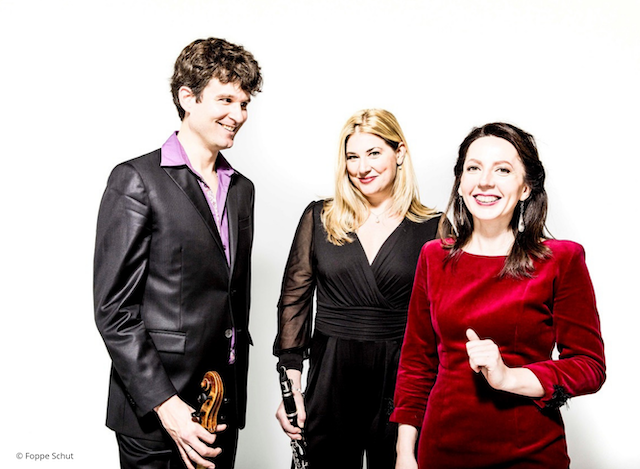
Find out more about the programme for our concert:
Trio in E flat major KV 498, ‘Kegelstatt’ Wolfgang Mozart 1756-1791
i. Andante; ii Menuetto; iii Rondeaux: Allegretto
composed in 1786Mozart showed prodigious ability from his earliest childhood. Already competent on keyboard and violin, he composed from age 5. At age 17, he was engaged as a court musician in Salzburg, but grew restless. In 1781 he moved to Vienna where he achieved fame but little financial security. During his final years in Vienna, he composed many of his best-known works. The circumstances of his early death have been much debated and were dramatised in the film ‘Amadeus’.
In 1786, faced with dwindling performance opportunities, Mozart turned to writing chamber music, which enjoyed enormous popularity in Vienna. The ‘Kegelstatt’ was composed in this year. Mozart’s enthusiasm for the clarinet dated back to 1764, when he first heard the instrument in London. Mozart composed the piano part for Franziska von Jacquin, one of his best piano pupils; the clarinet part for Anton Stadler, for whom he also wrote his Clarinet Concerto; and the viola part for himself. ‘Kegelstatt’ means a skittles or bowling alley. Mozart loved to play skittles but there is nothing on his manuscript to suggest skittles.
The lovely first movement flows at a gentle pace. It allows Mozart to revel in the mid-range sonorities of two of his favourite instruments. Striking, is his display of chromaticism (notes out with the main key of the piece) in the form of rising semitones at the ends of many of his phrases. The Menuetto is intimate and serious. The outer sections feature emphatic contrasts between loud and soft. Chromaticism takes on a yearning quality toward the end of the second section. In the trio section, Mozart focuses on a four-note motive that circles in on itself in semitones, alternating this idea with spates of running triplets—a truly novel idea. The finale, with its sunny refrain, unfolds as a seven-section rondo. The mood darkens for the middle episode with the viola’s stormy outburst in the minor mode. This movement features some brilliant passages for all the instruments - the piano in particular, which would have shown off Franziska von Jacquin’s fleet fingers to great advantage.
Trio for Clarinet, Viola and Piano in E flat major Julius Röntgen 1855-1932
i. Andante; ii. Allegro deciso; iii. Sostenuto - Allegro comodo
composed in 1921
Julius Röntgen was born in Leipzig to a family of musicians. He was taught music by his parents and grandparents, and other subjects by private tutors. In Leipzig, he and his parents were part of a musical circle, and it was at one of its soirees that he first met Brahms, who remained a lifelong friend. At age 18 he became a professional pianist. In 1877, he moved to Amsterdam to become a piano teacher in the music school. Brahms frequently visited him in Amsterdam, and in 1887 Röntgen performed Brahms' second piano concerto, conducted by the composer. Röntgen became a renowned accompanist, working with the violinist Carl Flesch and the cellist Pablo Casals. Sometimes he performed as a piano accompanist in silent screen productions in the Tuschinski cinema theatre in Amsterdam. He also made many recordings of piano music for the pianola.
The first movement of this Trio is expansive and graceful, equal importance being assigned to all instruments. The second movement is darker, with a ‘rumble’ alternating with lighter ripples in the upper register. In the third movement, a yearning introduction is followed by a light, flowing allegro.++++++ Interval of 20 minutes ++++++
Three from Eight Pieces for Clarinet, Viola and Piano, Op. 83 Max Bruch 1838-1920
composed in 1909
Max Bruch was a German Romantic composer, teacher, and conductor who wrote over 200 works, including three violin concertos, the first of which has become a staple of the violin repertoire. He was born in Cologne to Wilhelmine, a singer, and August, a lawyer. At age 9, he wrote his first composition, a song for his mother's birthday. From then on music was his passion, and his studies were enthusiastically supported by his parents. He had a long career, moving among musical posts in different German towns. At the height of his career he spent three seasons as conductor of the Liverpool Philharmonic Society (1880–83), living for those years in Liverpool with his family.
Bruch wrote the Eight Pieces for his son, a clarinetist. Bruch intended that the Pieces be regarded as a set of independent miniatures of various styles, rather than as an integrated cycle. Like the late works of Brahms for clarinet, the Pieces favour rich, mellow instrumental hues in the alto range of the instrument and an autumnal maturity of expression. The clarinet and viola are evenly matched, singing together in duet or conversing in dialogue, while the piano is an accompanying partner. The Pieces range from three to six minutes in length.
The first of the six are straightforward in structure: in either a binary structure (A–B) or a ternary structure (A–B–A). The last two Pieces are in sonata form, and with the exception of the seventh miniature, all in thoughtful, minor keys. Though Bruch was fond of incorporating folk music into his works, only the fifth Piece, incorporates a folk tune.
Trio for Clarinet, Viola and Piano Jean Françaix 1912-1997i. Preludio; ii. Allegrissimo; iii. Scherzando; iv. Largo; v. Presto - Alla burlesca
Composed in 1990
Françaix was a French neoclassical composer, pianist, and orchestrator, known for his prolific output and vibrant style. His natural gifts were encouraged from an early age by his family. His father was a musicologist, composer, and pianist, and his mother was a teacher of singing. Françaix studied at the Conservatoire of Le Mans and then at the Paris Conservatory, and was only aged 6 when he took up composing, with a style heavily influenced by Ravel. Later, he studied with Nadia Boulanger, the teacher of generations of composers, including Bernstein and Copland. Françaix was an accomplished pianist from an early age, touring Europe and the U.S. Notably, he performed with the composer Poulenc’s Two-Piano Concerto in several engagements. Being a virtuoso pianist, many of his works feature the piano. He was a skilled orchestrator, and overall Françaix's style is marked by lightness and wit (a stated goal of his was to ‘give pleasure’).
His trio was written in 1990 to celebrate the 300th anniversary of the invention of the clarinet. Its five movements are lyrical and tonal, the three instruments working together in inventive fashion.
After a slow Preludio serving as an atmospheric musical introduction, the players take off for a ‘jocular dialogue’; then the third movement sparkles with playful textures and catchy rhythms, frequently passing the spotlight back and forth among the instruments. There follows a spell-binding Largo - slow music that builds melody from the haunting low register of the clarinet in dialogue with the richly expressive viola of the opening bars. It sets the stage for the crisp, elegant rhythms and good spirits of the Presto finale.
Programme notes compiled from various sources.
